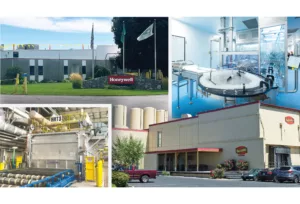Digital transformation strategies should be holistic
Improving upon customer experience is best place to start in adopting tech

It has become abundantly clear that digital demands on companies have skyrocketed in the past three years following the onset of the pandemic as workers went remote and consumers spent more time online, and those demands are here to stay.
One report from customer engagement platform Twilio shows that COVID-19 accelerated companies’ digital communications strategy by an average of six years while 97% of enterprise decision makers believe the pandemic sped up their company’s digital transformation.
The fallout, however, is that 70% of large-scale change programs don’t reach their stated goals, according to management consultancy McKinsey & Co.
In the three years since the pandemic’s onset, we’ve seen that for companies, being forced to change and changing effectively aren’t the same.
Let’s take a look at four strategies for successful, comprehensive digital transformation that are tied to business objectives, particularly in meeting and exceeding customer and employee expectations.
The following are four foundational practices that drive success.
1. Always start with the customer—not the tech. Operational efficiency and process improvements from digital transformation journeys shouldn’t dominate your strategy. Instead, focus on your customers first. A digital strategy is not a patch fix. It should be a holistic, intentional approach with your target audience at the center. People expect the same seamless delivery of digital experiences in business and banking as they get in their personal lives, such as buying groceries through an app, connecting with colleagues via videoconferencing, and instantly streaming the latest entertainment.
Instead of starting with the back office and seeking ways to cut operating costs, ask yourself what technology can do to improve your customers’ experiences with your brand. Start by imagining your customers’ journeys of engagement from first hearing about your brand to the first transaction they make to the customer service they receive after purchase. This process, called a customer journey map, can help you improve the experience from start to finish. Are you more competitive in the Washington market or the Idaho market? Does your advertising strategy include these findings? This is the information that should kickstart your digital transformation journey.
2. Empower employees with digital tools. If digital transformation starts with a customer-focused approach, the next strategic waypoint is considering employees too. Just as the way people consume media and buy products has become increasingly digital, so has the way they work. With the rise and staying power of remote or otherwise tech-enabled work during the pandemic, employees see that digital tools could make them better at their jobs, often with less effort and fewer roadblocks.
A good digital strategy will help free up your employees’ time on manual and tedious tasks, creating a runway for higher-value, innovative, and creative work. It also will help you attract more digital-savvy employees and retain the digital-first employees you have through increased job satisfaction, together, they can drive your company into the tech-first future.
3. Develop a strong data strategy and process from collection to distribution. As businesses integrate more digital tools into day-to-day operations, they generate more data than ever. Social media, digital payments, loyalty programs, website interactions and other new technology platforms add to the troves of data. But business leaders are stressed about organizing and acting on the data effectively. Especially as costs for data-related tools add up.
It’s imperative to capture the most accurate information from customers, products, and vendors. From there, you need a method to organize and store the data securely. Then develop a distribution strategy to ensure the right people have the correct data to inform decision making. Successful data usage starts with a plan from collection to distribution and aims to help organizations make smarter, faster decisions while improving customer and employee experiences. From small to middle-market businesses, this can seem daunting, but strong data makes stronger business decisions, and the long-term benefits are key to sustainability and longevity.
4. Free your data from silos to drive value. All teams need data. Ensuring you get useful data in the right hands requires effective digital tools throughout the organization. Too often, organizations put the bulk of tech innovation responsibilities on information technology or digital teams, but every team can use data to deliver more targeted solutions. Modern software platforms and application interfaces, known as APIs, can make data securely accessible to the people who need it when they need it.
When considering where to integrate new data solutions, ask yourself what are your company’s top daily functions that could be aided by the data? Is that data usable, visible, secure, and integrated? If not, ask employees where the gaps are. Open the door to creative ideas and input from people of all experience levels and job titles. For family businesses, this can mean further integrating members of the next generation who may be more comfortable with the latest tools.
Customer and employee experience should be at the center of any digitization effort. Equipping employees with the right tools and ways to share workflow ideas, making data more accessible, and increasing the value of your data with the right strategy will all add up to more satisfied customers and increased loyalty.
But remember, as you innovate to stay competitive, other companies will do the same. Digital transformation isn’t a set-it-and-forget-it process. It’s a continuous journey of learning, testing, iterating, and executing to exceed ever-expanding expectations.

_c.webp?t=1763626051)


